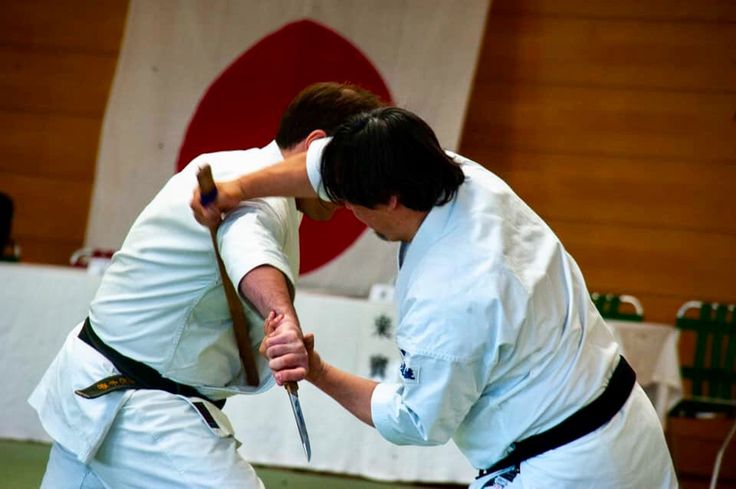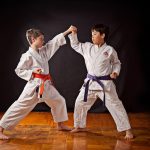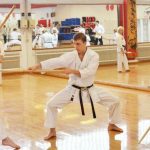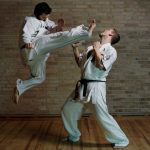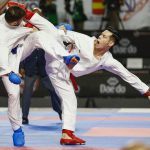Ready to embark on an exciting journey into the world of martial arts? Wado Ryu Karate is here to take you there! Developed in 1939 by Hironori Otsuka, this Japanese martial art combines both hard and soft techniques, focusing on evasion and circular movements rather than direct confrontation.
It also emphasizes mental discipline and physical technique, making it a great choice for those looking for a less aggressive form of self-defense. Read on to learn more about Wado Ryu Karate, from its history and philosophy to its techniques and benefits.
Wado Ryu Karate is based on core principles such as respect, humility, courtesy, honor, loyalty, and responsibility—values that are still important today.
It teaches practitioners how to use their body weight when executing techniques like kicks and punches—something that can be beneficial in both competition and self-defense situations.
Additionally, learning Wado Ryu Karate can help improve overall fitness levels due to the fact that it requires physical exertion as well as mental concentration.
So if you’re looking for a traditional Japanese martial art or just want to get into shape while having fun at the same time, then Wado Ryu Karate might be just what you need.
Brief History of Wado Ryu Karate
Are you looking to learn a new martial art? Wado-Ryu Karate might be the perfect fit for you! This style of karate was founded in 1939 by Hironori Otsuka and focuses on self-defense.
The name “Wado” comes from the Japanese words “wa” (harmony) and “do” (way).
Wado-Ryu Karate is based on circular movements to redirect an opponent’s attack. It also emphasizes balance and control, so practitioners can use their opponent’s energy against them without relying on brute strength.
This martial art is perfect for anyone who wants to learn how to defend themselves. It teaches practitioners how to stay in control during a fight and use their opponent’s energy against them.
Founder Of Wado Ryu Karate
Karate has been around for centuries, but one man changed the face of martial arts forever. Hironori Otsuka, born in 1892, was the founder of Wado Ryu Karate. He combined techniques from Jujutsu, Judo, Aikido, and Shindo Yoshin Ryu Jujutsu to create a unique style of karate.
Not only was he a master swordsman, but he also incorporated some sword techniques into his karate style.
In 1939, Otsuka opened the first dojo in Tokyo and began teaching his new style of karate to students.
His teachings were so popular that in 1946 he established the Japan Karate Association (JKA). This organization is still active today and continues to promote Otsuka’s legacy and teachings.
Thanks to Hironori Otsuka’s dedication and hard work, we can now enjoy the benefits of Wado Ryu Karate. He truly revolutionized martial arts and left behind an incredible legacy that will live on for generations.
Wado Ryu Belt Order
Are you interested in learning Wado Ryu karate? If so, the Wado Ryu Belt Order is something you should know about. It’s the order in which you must earn your belts.
The belt order consists of 10 kyu grades and 10 dan grades. The first set of kyu grades is 6th–10th kyu. The second set is 5th–1st Kyu.
The belt colors for each rank are:
- 1st Kyu– Brown with four white stripes
- 2nd Kyu– Brown with three white stripes
- 3rd Kyu– Brown with two white stripes
- 4th Kyu– Brown with one white stripe
- 5th Kyu – Brown
- 6th Kyu – White
- 7th Kyu – Yellow
- 8th Kyu – Orange
- 9th Kyu – Green
- 10th Kyu – Blue
For the Dan grades, the belt colors are:
- 1st Dan– Black with one red stripe
- 2nd Dan– Black with two red stripes
- 3rd Dan– Black with three red stripes
- 4th Dan– Black with four red stripes
- 5th Dan– Black with five red stripes
If you reach 6th Dan and above, you don’t wear a belt but instead wear a black hakama. So if you want to become a Wado Ryu Karate master, make sure to follow the Wado Ryu Belt Order.
Wado Ryu Karate Techniques
Wado Ryu Karate could be the perfect choice! This martial art blends circular movements from jujutsu with linear movements from karate. It offers a comprehensive form of self-defense, including strikes, kicks, blocks, throws, and joint locks.
Strikes include punches, elbow strikes, open hand techniques, and hammer fists. Kicks range from front kicks to side kicks to roundhouse kicks.
Blocks protect you from an attack and come in three forms: the inside block, the outside block, and the rising block.
Throws are used to take down opponents quickly—try hip throws or shoulder throws. Joint locks immobilize your opponent by locking their joints in place—armlocks and wrist locks are two examples.
Wado Ryu Karate is an ideal way to learn self-defense while getting a great workout.
Is Wado Ryu Karate Effective for Self-Defense in a Real Fight?
Wado Ryu Karate is an excellent self-defense martial art.This complete style combines striking and grappling techniques, giving you the skills and confidence you need to stay safe.
Wado Ryu Karate emphasizes technique and timing over brute strength. It also teaches students how to use their environment to their advantage: nearby objects can be used as weapons or shields, and your own body can be used for defense or counterattacks. Plus, Wado Ryu Karate teaches students how to recognize dangerous situations and how to avoid them before they become physical confrontations.
So, if you’re looking for an effective way to protect yourself in a real fight, consider learning Wado Ryu Karate.
How is Wado-Ryu Different?
Look no further than Wado-Ryu Karate! This style of martial arts focuses on using circular movements to deflect an attack and then counterattack with the same force or greater. It also emphasizes the body’s natural reflexes rather than relying on muscle strength.
Wado-Ryu Karate has a strong emphasis on kata, prearranged forms that help practitioners perfect their techniques. Plus, this style emphasizes mental disciplines such as concentration, focus, and control. These disciplines are essential for mastering the art of Wado-Ryu Karate.
So if you’re interested in learning a unique martial art that combines traditional Japanese and Chinese styles, consider Wado-Ryu Karate! With its focus on circular movements and natural reflexes, as well as its emphasis on mental discipline, this style will provide you with an engaging learning experience.
How Many Kata in Wado Ryu Karate?
Are you looking to learn karate? Wado-Ryu is a great option. It has 18 kata, divided into 8 basic Pinan (Heian) kata and 10 more advanced Shodan kata. Each of the 18 kata focuses on techniques such as punches, kicks, blocks, throws, and joint locks.
You’ll also learn balance, timing, power, speed, and distance control. With practice and dedication, you can master each of the 18 kata and become a skilled martial artist.
Does Wado Ryu Karate Use Weapons?
Karate is a martial art with centuries of history. Wado Ryu Karate is a unique style that utilizes weapons, although not in the same way as other martial arts. Weapons training is an important part of the Wado Ryu dojo, and some schools even specialize in weapons. The most common weapons used are the bo, Jo, tonfa and kama.
Weapons training can help to improve strength, coordination, accuracy, and timing. It also helps to develop a better understanding of karate principles like distance control and proper body mechanics.
Learning to use weapons in karate can be an exciting way to challenge yourself and take your practice to the next level.
Conclusion
Wado Ryu Karate is a unique martial art that combines hard and soft techniques with an emphasis on mental discipline and physical technique. Developed in 1939 by Hironori Otsuka, this style of karate has 10 kyu grades and 10 dan grades, each with their own belt colors.
It also includes 18 kata focusing on strikes, kicks, blocks, throws, and joint locks. Plus, weapon training is incorporated to improve strength and coordination. Wado Ryu Karate is a great choice for anyone looking for a traditional Japanese martial art or just wanting to get fit while having fun.
With its combination of hard and soft techniques as well as weapons training, it’s sure to keep practitioners engaged and motivated.

